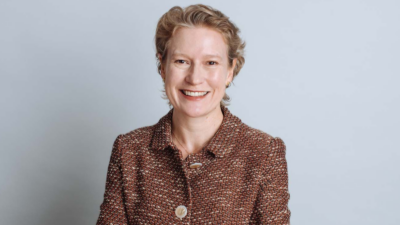Australia leads Asia in unlisted property
(pictured: Alan Dalgleish)
Australia represents the largest investment group for single-country unlisted property funds in the Asia Pacific region, according to the latest study by ANREV. And Asia Pacific investors are more likely than those in Europe or the US to invest in core property assets.
Alan Dalgleish, the chief executive of ANREV (Asian Association for Investors in Non-listed Real Estate Vehicles), said on a visit to Australia last week, that unlisted property sector was proving to be very robust, with pension funds providing the majority of funding.
The types of vehicles are evolving too, with joint ventures and small co-operatives over which investors have more control becoming more popular since the global financial crisis.
ANREV was established in 2007, just prior to the crisis, but it taps into information and research from its European counterpart, INREV, and US version, known as NCREIF. Each group has a strong connection to the pension fund world. Their combined data dates back to 1978.
The latest annual survey of investment activity – for calendar 2015 – shows that US$134.8 billion was raised globally for unlisted real estate, of which 15.4 per cent was from Asia Pacific – and 48.7 per cent from Europe and 35.9 per cent from North America.
Interestingly, Europe is the major destination for the investments, taking 51.1 per cent compared with North America’s 27.9 per cent and Asia Pacific’s 13.6 per cent.
ANREV says: “Globally, non-listed real estate funds were the most popular vehicle for capital by some way and represented almost half (47.3 per cent), followed by direct investment through separate accounts (24 per cent) and joint ventures (13.3 per cent)…
“The overall results underline not only the ongoing viability of the industry but also the breadth of opportunity within it. The majority of fund managers (73.2 per cent) expect to see this upward trend continue over the next few years.”
Australia and, to a certain extent, Asia tended to differ from the investment mores of their European and North American counterparts. For the Asia Pacific raisings, the largest component was for “core” funds (54.8 per cent) while European investors committed most to “value added” funds (49.0 per cent) and North American investors to “opportunistic” funds (58.2 per cent).
For single-country funds in the Asia Pacific region, which raised almost two-thirds of the equity, 43 per cent were for funds investing in Australia.
ANREV believes that the challenges relating to deployment of capital into unlisted property will become tougher. Investors and fund managers may need to shift their preferences for risk, style and region to find the investments that can deliver attractive returns, Amelie Delauney, ANREV’s director of research and professional standards, said.
About 50 per cent of the 200-odd ANREV members have offices in Hong Kong and Singapore, although about two-thirds of the membership involves organisations ultimately domiciled in Europe and North America. Australia is underrepresented, with just a “few” members, none of whom is a big super funds.
The benefits of members, Dalgleish said, include.
- The intangible benefit of improving the transparency and best practice within the property component of the industry, and the tangibles of:
- a research program, including survey and the provision of data
- performance measurement indices, which were a world first established in 2011, with Australia providing about half the Asia Pacific data
- Guidelines for interaction between managers and investors, to aid compliance, and
- Events, which number about 50 per year including a big annual members-only conference, which rotates between Hong Kong and Singapore each October.
Dalgleish says the benefits of membership for super funds and managers involve the global dimension of ANREV’s reach in terms of research and benchmarking on the one hand and networking and other opportunities on the other.









